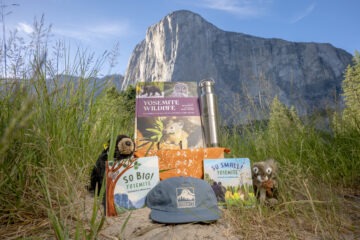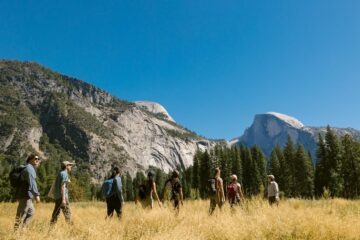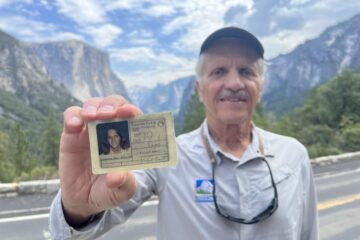Photo credit: Devin Edmonds
Yosemite Amphibians in the Big City: Everything it takes to bring endemic toads and frogs back to Yosemite
When Yosemite National Park Aquatic Ecologist Rob Grasso first arrived in the park, the Aquatic Species Restoration Program had one focus: restoring Yosemite’s population of Sierra Nevada Yellow Legged-Frogs. Grasso’s program oversees five Yosemite amphibians, many of which have struggling populations due to long-term weather and water changes: Yosemite toads, California red-legged frogs, foothill yellow-legged frogs, western pond turtles, and river otters.
In the case of the Yosemite toad and the Sierra Nevada yellow-legged frog, warmer temperatures and prolonged droughts have reduced water availability in their meadow habitats. This, unfortunately, has caused rapid declines among these amphibian species populations.
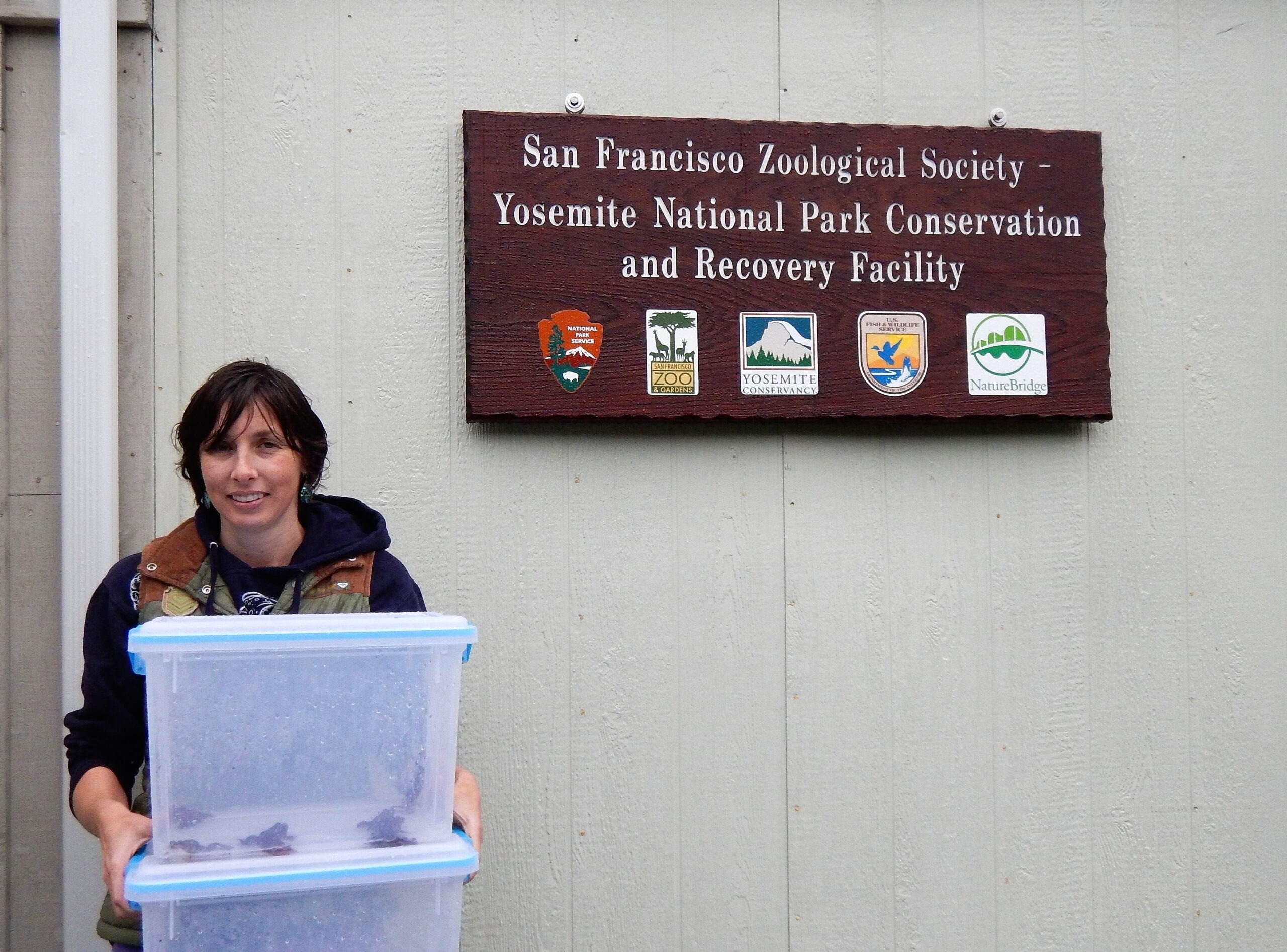
NPS biologist Ninette Daniele bins of California red-legged frogs at the San Francisco Zoo rearing facility. The frogs will be released in Yosemite Valley as part of a project to restore the population of this amphibian in the park. Photo by NPS.
Grasso explains, “Frogs are drying up because of the heat waves we’re experiencing — if they don’t have water, they will dry out. These sites once had thousands of frogs, and now, it’s a great day if you see six.”
In response to dwindling amphibian numbers, Grasso’s team has introduced hundreds of toads and frogs into amphibian-friendly habitats throughout Yosemite National Park. Eggs are collected shortly after being laid and carefully transported to a temporary, indoor home outside of the park to be raised to maturity.
Yosemite toad, and California red-legged frog, Sierra Nevada yellow-legged frog, and Foothill yellow-legged frog eggs are brought from their inviable habitats to the big city for a temporary, two-year stint at the San Francisco Zoo’s conservation facility. While the big city may seem like a scary place for a small frog or toad, raising these individuals at the San Francisco Zoo’s facility allows biologists to protect them from threats like disease, habitat loss, competing species, and more.
In other words, doing so gives our little frog and toad friends the best chance of growing into thriving adult amphibians. Once fully mature, the adult frogs and toads are transported back to Yosemite. In recent years, Grasso’s team also performed reintroductions of California red-legged frogs from their temporary homes in San Francisco back to Yosemite National Park.

Rob Grasso holds a soon-to-be-released California red-legged frog, one of about 200 red-legged frogs that were reared at the San Francisco Zoo and released in Yosemite Valley on May 3, 2019. Photo by NPS.
While a handful of frogs have been reintroduced to areas where their ancestors once lived — Swamp Lake and Gravel Pit Lake, to name a few — Grasso’s team has also released over 5,000 California red-legged frogs in Yosemite Valley, an area never before used by red-legged frogs.
“It’s like a science fiction story,” says Grasso, “If they’re going to persist, I don’t think we can keep them where they are, we have to find this population of frogs another place to live.”
But why wouldn’t Grasso and his team put the frogs back in their original habitat? Well, while these lakes and meadows were once too cold for our froggy friends, rising temperatures have now made these areas just warm enough for our frog and toad friends. In fact, Grasso suspects that the frogs actually have a better chance of surviving and reproducing in these higher-elevation sites. After being released in Yosemite Valley, the species is now successfully reproducing and regaining a foothold in the ecosystem.
Much of this amphibian restoration work is funded by Yosemite Conservancy donors. In partnership with the National Park Service and the San Francisco Zoo’s conservation staff, this work to relocate and raise Yosemite amphibians has increased native frog and toad populations across different habitat locations throughout Yosemite.
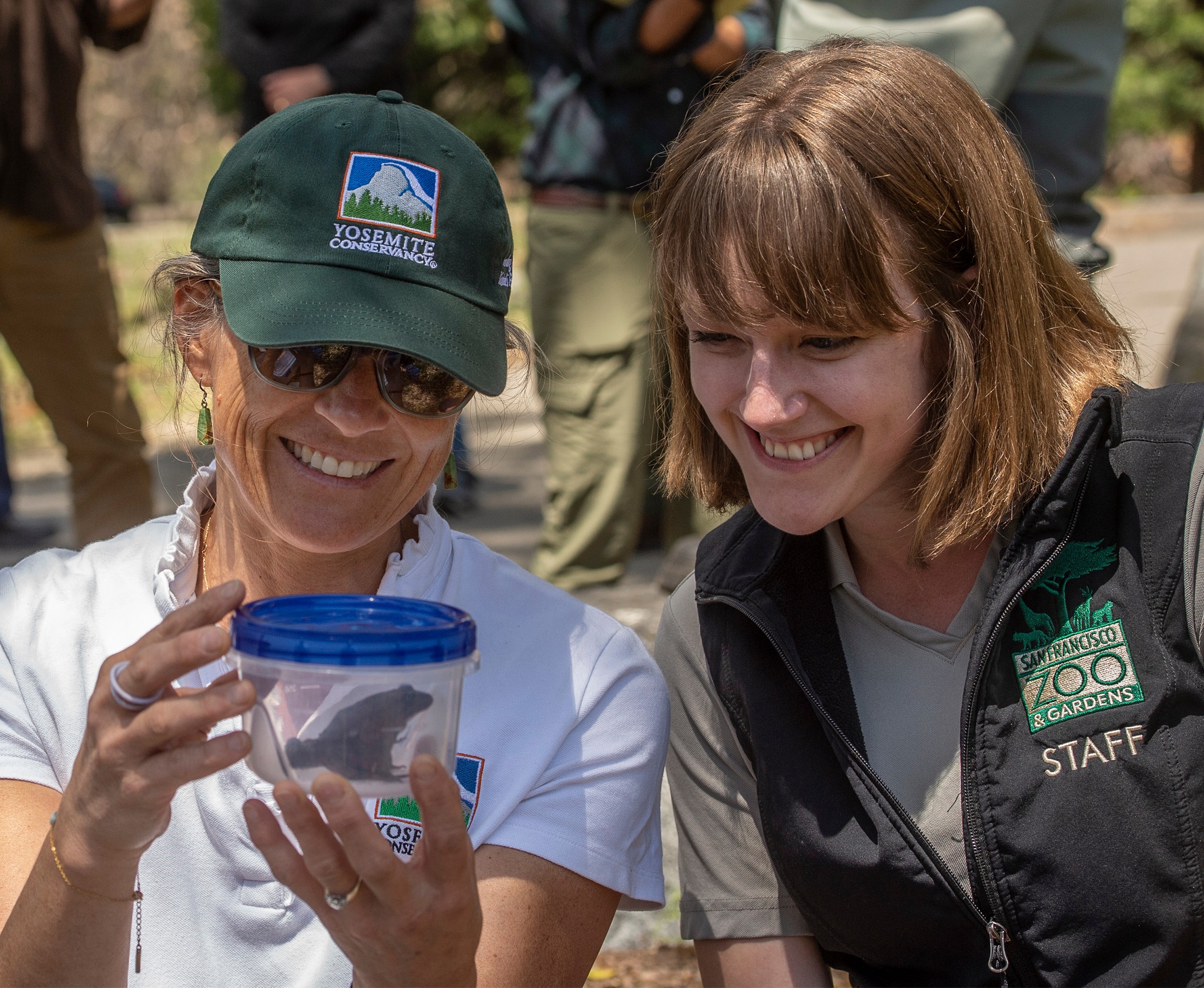
Yosemite Conservancy and San Francisco Zoo staff marvel at a soon-to-be-released California red-legged frog. Photo by NPS.
This work has also played a key role in promoting a variety of genetic traits in the park’s amphibian populations, which is important because a strong mix of genes makes the populations more resilient to setbacks including drought, fire, and disease.
Grasso reflects, “As far as I know, this was the first conservation translocation and assisted migration of an amphibian species. And, if we can get the population established in Yosemite, we will also use it to repopulate other areas outside of the park.”
Supporting the restoration of native Yosemite amphibians is just one piece of the conservation puzzle, all of which we do thanks to the support of our generous donors.
To learn more about the current projects we’re funding, keep reading here. And, to learn more about why meadows and wetlands in Yosemite are so important, keep reading here.

